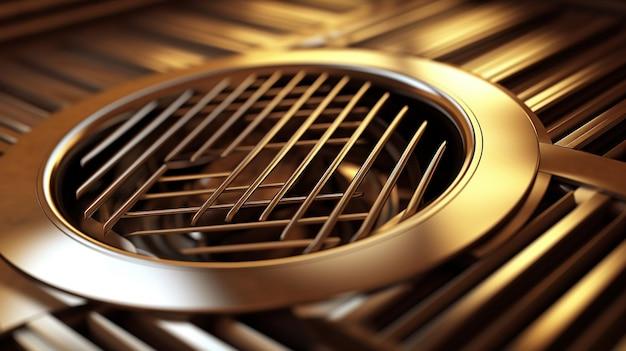Heat transfer is a fascinating area of study that helps us understand how energy is moved from one place to another. We often hear about conduction, convection, and radiation as the three main mechanisms behind heat transfer. While conduction and radiation are well-known, convection is a bit different. It involves the transfer of heat through the movement of fluid particles, such as air or water. But have you ever wondered why convection is not possible in solids?
In this blog post, we will delve into the world of heat transfer and explore the reasons why convection cannot occur in solids. We will also touch upon other related concepts like the directions in which heat flows, the types of heat transfer that do not require matter, and even the basic equation of thermal radiation. So, grab a cup of your favorite beverage, sit back, and let’s dive into the mesmerizing world of heat transfer and the limitations of convection in solids.

Why Convection Does Not Rock in Solids
Wait, Can Convection Even Happen in Solids
You might be wondering, “Why can’t we have a sizzling-hot convection party in solids?” Well, my curious friend, it’s time to uncover the science behind this mystery. Turns out, convection, that funky heat transfer phenomenon where hot fluids rise and cold fluids sink, simply doesn’t cut it in the world of solids. Let’s dive into the fascinating reasons why!
Locked Up and Uncooperative
Unlike fluids that can freely flow and dance, solids are like those friends who always stick to their designated spots at a party. You know the ones I’m talking about, right? Well, for heat to be transferred through convection, there needs to be movement within the material. But guess what? Solids have their particles tightly packed and locked in place, refusing to budge even an inch. Talk about being party poopers!
No Shakin’, No Bakin’
When things get hot, fluids have a wild tendency to expand and become less dense, making them rise and creating those enchanting convection currents. But sorry, solids, you missed the memo! When solids are heated, they don’t expand as much as fluids do. So, without that dilation and density change, there’s simply no real party happening in there. It’s a bummer, I know.
The Convection-Free Symphony
Okay, so now you might be asking, “If convection isn’t the star of the show, how on earth do solids transfer heat?” Good question, my inquisitive friend! Solids have a different heat transfer maestro called conduction. In conduction, heat spreads through direct contact between particles. It’s like a symphony where particles pass their energy to their neighbors without any hoppin’ and poppin’. Not as flashy as convection, but hey, every heat transfer method deserves its own time in the spotlight, right?
Wrap It Up, Science!
So, there you have it! The tale of why convection likes to party with fluids but leaves poor old solids out in the cold. With their stubborn, fixed positions and minuscule expansion, solids just don’t have the moves to make convection happen. But fear not, because conduction swoops in to save the day and keep the heat flowing. And now you’re armed with some solid knowledge on this conundrum. Go forth and spread this heat transfer wisdom—it’s rockin’ time!

FAQ: Why is Convection Not Possible in Solids?
Welcome to our FAQ section on the topic of convection and why it is not possible in solids. We’ve compiled a list of frequently asked questions to help you understand the concept better. So, let’s dive in!
How is Heat Transferred Through Convection
Heat can be transferred through convection when it involves the movement of fluids, such as liquids or gases. When a fluid is heated, its molecules gain energy and become less dense. This causes them to rise while the cooler, denser fluid sinks. The upward motion of the warm fluid and downward motion of the cool fluid create a circulation pattern that transfers heat. This process is known as convection.
Can Convection Occur in Air
Absolutely! Convection is not limited to liquids alone; it can occur in gases like air as well. In fact, this is often observed in our everyday lives. Think about a cozy, crackling fire during winter. The heat produced warms the air around it, causing it to rise and creating a gentle draft. This movement of warm air and cooler air is an example of convection.
What Type of Heat Transfer Does Not Require Matter
Interestingly, convection requires the presence of matter to transfer heat. However, there is another form of heat transfer that does not require matter at all. It’s called thermal radiation. This process involves the emission of electromagnetic waves, such as infrared radiation, from a warm object to a cooler one, without the need for a medium to carry the heat. Thermal radiation can occur in a vacuum, making it unique compared to conduction and convection.
Why is Convection Not Possible in Solids
Ah, the million-dollar question! The answer lies in the nature of solids. Unlike liquids and gases, solids have fixed, closely-packed molecules that do not easily move around. As a result, they exhibit very little or no ability to transfer heat through convection. The absence of fluid-like properties in solids restricts the movement of their particles, leaving convection off the table.
What is the Only Form of Heat Transfer that Can Occur in a Vacuum
In a vacuum, where there is a complete absence of matter, the only form of heat transfer that can occur is thermal radiation. Remember, thermal radiation relies on the emission and absorption of electromagnetic waves, which can travel through the vacuum of space or any other place devoid of matter. It’s like a secret agent of heat transfer, working silently in the void.
In What Direction Does Heat Flow
Heat always flows from hot to cold. It seeks equilibrium, much like a good ol’ peacekeeper. So, if you have a steaming cup of coffee and a chilly room, the heat from your coffee will eventually escape into the surrounding air, making your drink cooler while warming up the room. Heat has a way of finding balance, like a cosmic yin and yang dance.
Why is Convection Not Possible in Solids for Class 7
For all the Class 7 scholars out there, the reason convection is not possible in solids can be attributed to the closely-packed particles in solid materials. These particles have limited freedom to move and cannot produce the fluid-like motion required for convection. So, while fluids can dance with heat, solids prefer to boogie with other heat transfer methods like conduction!
What is the Basic Equation of Thermal Radiation
Now we’re getting into the math of heat transfer! The basic equation that governs thermal radiation is known as Stefan-Boltzmann’s law. It states that the power radiated by an object is proportional to the fourth power of its temperature. In fancy symbols, it can be written as:
P = σ * A * ε * T^4
Where P represents the power radiated, σ is the Stefan-Boltzmann constant, A is the surface area of the object, ε is its emissivity (a measure of how efficiently it can emit radiation), and T is the temperature in Kelvin. So remember, when it comes to thermal radiation, T to the power of 4 truly matters!
That concludes our FAQ section on why convection is not possible in solids. We hope these questions and answers have shed some light on the intriguing world of heat transfer. If you have any more curiosities, feel free to explore our website for more fascinating topics. Stay curious and keep learning!
Disclaimer: The information provided in this article is for educational purposes only and should not be taken as professional advice. Always consult with a qualified expert for specific questions related to your situation.
Published on March 1, 2023
